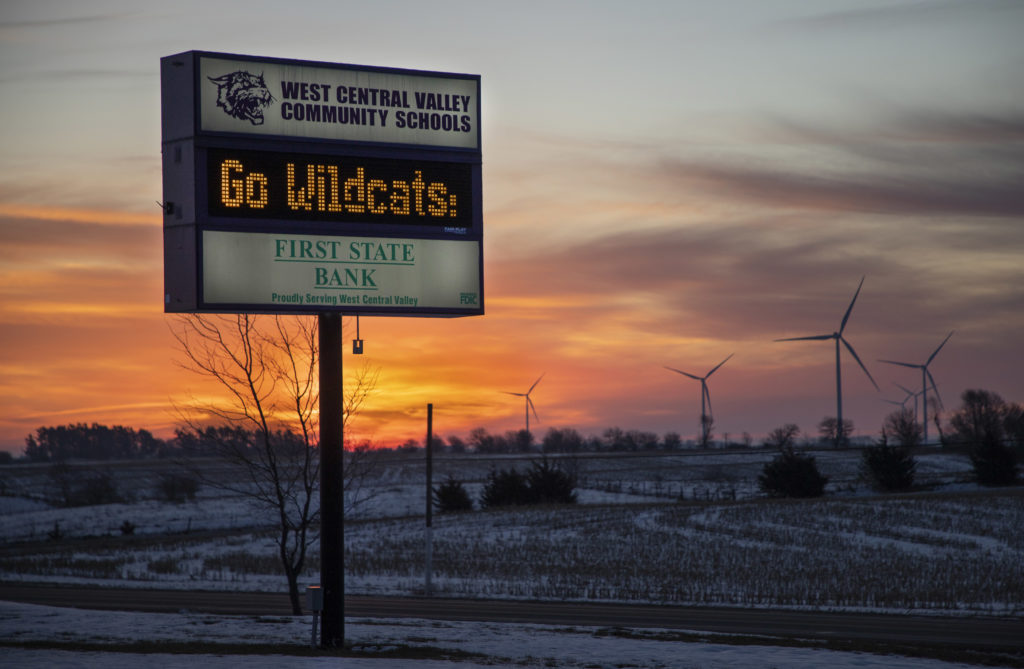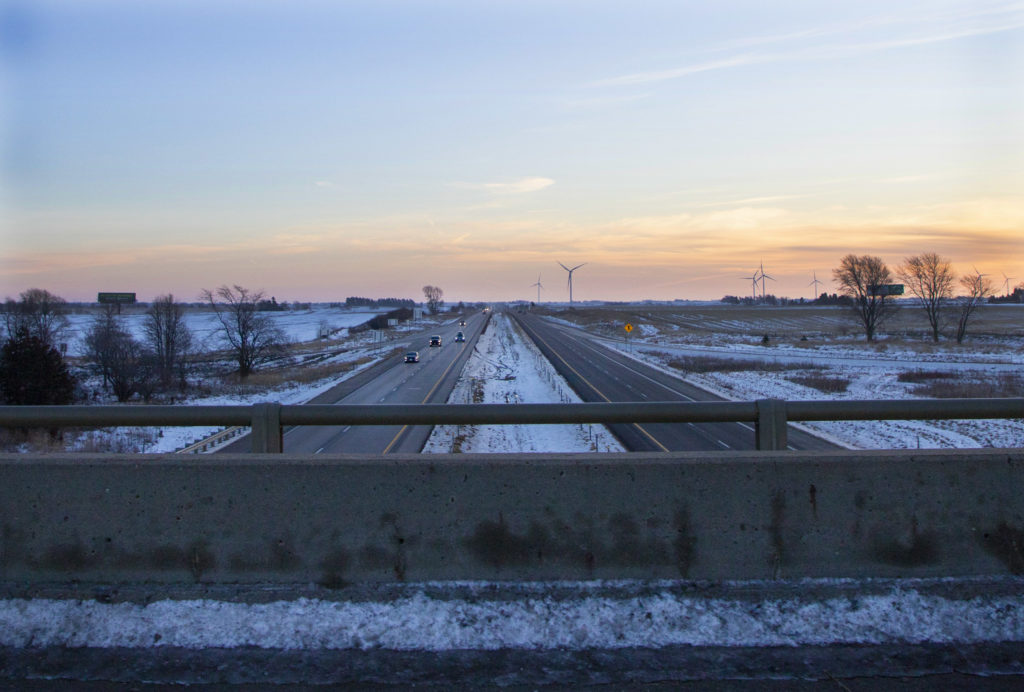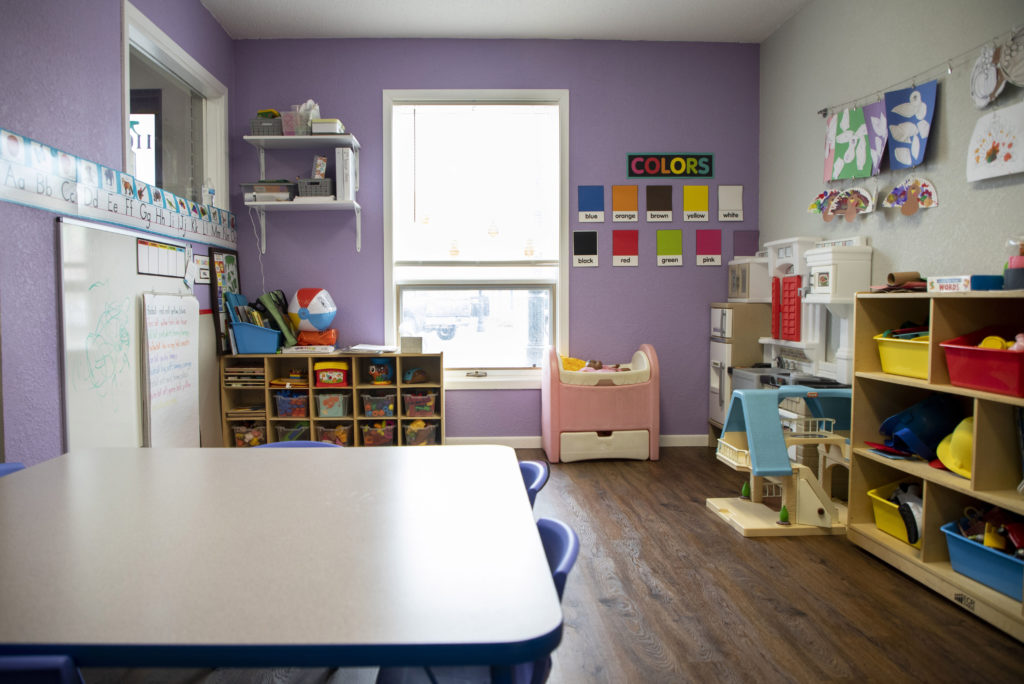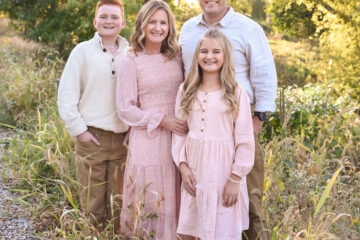Story and photos by Emily Blobaum
There is a serious child care crisis in rural Iowa.
There’s the issue of availability. Nearly a quarter of Iowa’s population lives in a child care desert, which is an area where the demand for child care far exceeds the availability of providers and slots.
There’s the issue of affordability. On average, it costs more for a child under 5 to attend full-time child care at a Department of Human Services-licensed center than it costs for in-state tuition at any of Iowa’s regent universities.
Then there’s the issue of quality. As of July 2020, of the 1,354 registered child development homes and licensed child care centers and preschools that participate in the DHS Quality Rating System, only 604 have a level 4 or 5 quality rating.
It’s a bleak picture, but there is progress being made, even during the pandemic.
Stuart — a town of 1,700 good eggs and a few stinkers, per the town’s slogan — is located just north of Interstate 235, nestled in the corner of Guthrie, Adair, Dallas and Madison counties.
It’s a short 40-minute drive to Des Moines from Stuart, making it a prime home base for commuters. It’s one of few rural Iowa communities that are still growing, not shrinking. The chamber of commerce holds its meetings at the Country Kitchen. It’s a small enough town where there are no stoplights, yet big enough to be home to four hotels.
But until two months ago, Stuart had no licensed child care centers for kids under the age of 5.

Alicia Geil has worked with kids for much of her life. She worked at a day care center after she graduated from high school, was a stay-at-home mom for several years, worked at West Central Valley as a special education teacher for 8 1/2 years and provided child care out of her home for two years.
In late 2019, she decided it was time to open a licensed center. She had been talking with other child care providers in the area and knew there was a severe lack of available spots.
Child care is hard to come by in the area. Within a 10-mile radius of Stuart, there are only 13 child care providers. That may sound like a lot, but only three of them are licensed centers, one of which is down the road in Earlham and rarely has openings, and one is only for kids ages 5 and up. The other is Geil’s. The rest are run out of homes, which have strict limitations on capacity.
“I had so many people calling me, I just couldn’t help them,” Geil said. “The limits on how many kids you can have, especially kids under the age of 2 is very, very small.”
In January, Geil reached out to contacts at Child Care Resource & Referral and the region’s DHS licensing agent to get the process started.
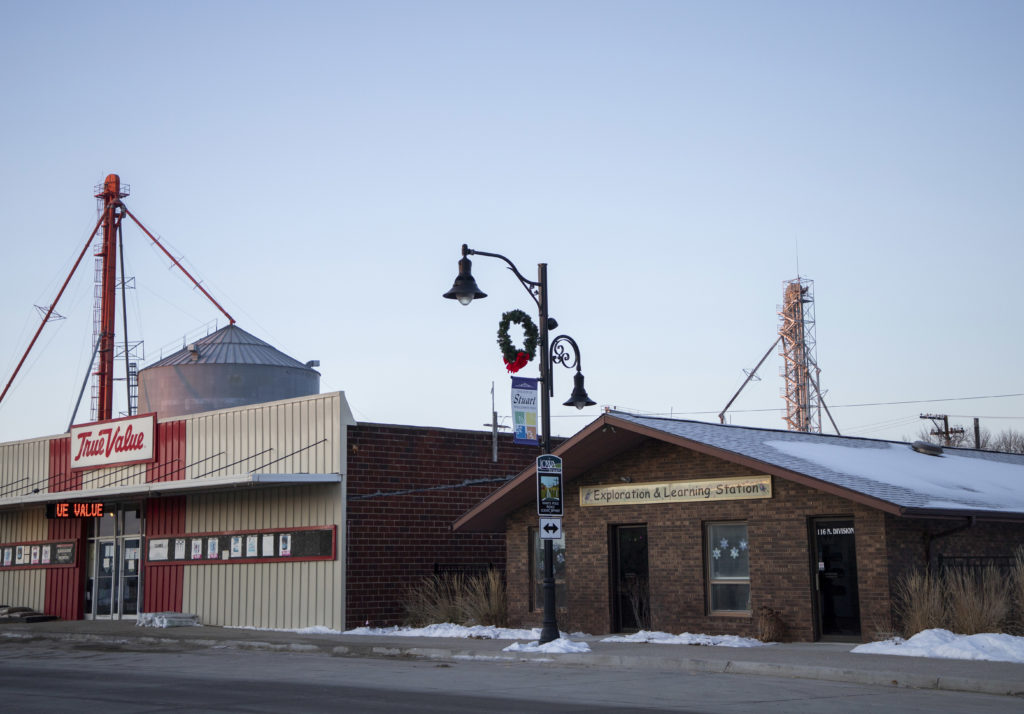
She approached the Stuart Enterprise for Economic Development (SEED), which had been discussing the need for a child care center in the city for the last decade, about a vacant building at 116 N. Division St., once home to Farmers Mutual Fire Insurance. SEED bought the building in the spring, and from there Geil got to work.
She hired Dan Levi and Mary Janssen, both co-founders of the Black Hawk County Child Care Coalition, to inspect the building for necessary renovations needed to comply with DHS regulations. Levi, who also owns an architecture firm that specializes in child care center design, said fortunately the renovations needed were minimal. All the building needed was the addition of an exterior door and a slight reconfiguration of the interior.
After a few pandemic-related delays regarding architectural plan approvals and fire marshal inspections, Exploration & Learning Station opened its doors on Oct. 12.
Including Geil, Exploration & Learning Station has six full-time and three part-time employees. Capacity is set at 30 kids, and as of now she has 18.
The praise she earned was extensive.
“She’s very brave,” Dawn Oliver Wiand, president and CEO of the Iowa Women’s Foundation, said. “Revenues are down for centers because of attendance, and costs are up because of the PPE they have to buy. So to make that kind of commitment that shows, one, you’re brave and two, you’re dedicated and really want to make sure that there’s going to be available child care when everybody gets back to work.”
From Deb Martens, Child Care Resource & Referral program director for southwest Iowa: “The importance of Alicia opening in the pandemic just shows what a leader she is. She had a vision and a mission. Those are the successful persons that open a child care center.”
“Communities need champions like Alicia,” Levi said.
‘There is not enough child care to go around’
Sara Jo Corlis and her husband moved to Dexter from Omaha in July. She said finding child care for her two kids, who are currently going through the adoption process, was stressful.
“[In Omaha], there were tons of child care options. Moving to rural Iowa was a big shock. I didn’t realize it would be as difficult as it was,” she said.
For Corlis, finding a center that was licensed with the state was important. Because she has foster children, she receives child care assistance, and if they can’t find a licensed provider, they would have to pay out of pocket.
They couldn’t find any nearby, so her kids ended up having to go to an unlicensed provider in Dexter for several months.
“It was very stressful trying to find even just the initial provider. She was the only one near us that had openings at the time, so we didn’t really have a choice,” Corlis said. “The provider that we went through was very nice and it worked out, but it wasn’t something we were looking for long-term.”
Corlis heard from a friend that Geil was opening a licensed center as soon as she could get DHS approval and immediately secured a spot.
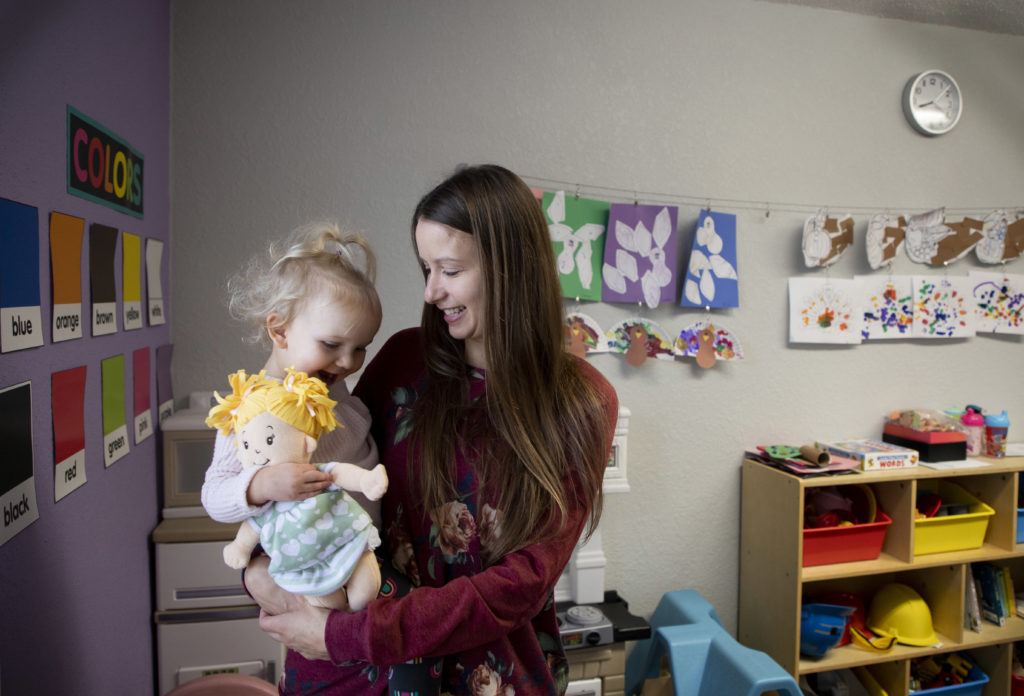
Amanda Nims thought she had graduated from the day care period in her life after her then 7- and 9-year-olds were in school. Then she had her “bonus baby,” Merritt, who is now 2.
She was specifically in the market for a child care center after a previous experience she had living in Adel where the in-home provider she had been taking her oldest kid to came down with influenza and had to close for two weeks.
“That put us in a real bind,” Nims said. “Ever since, we started going to a day care center for the consistency, schedule and reliability of it.”
With Merritt, she was hoping to find something similar in the West Central Valley school district, where she works as the director of teaching and learning, but like many others, couldn’t find any in the 10- to 15-mile radius she was willing to travel.
She was running out of options and was on several waiting lists, until Geil opened up her center.
“The hardest part is knowing whether a place is going to be good or not,” she said. “It’s worth whatever I have to spend to know that when I drop my child off, that they’re safe and that it’s a good experience for them. And it definitely is [at Exploration & Learning Station].”
Trisha Kirkpatrick ran a day care out of her house in Menlo for nearly 10 years. At the time, she had a 5-year-old and a newborn, who she didn’t want to put in day care.
“I wanted to do it for my own kids to be able to stay with them and for the availability [for other kids],” she said.
Spots were full at her day care from the time she opened until she closed in 2015. By then her kids were in school and Kirkpatrick saw this as her chance to have a career outside the home.
Fast-forward a few years and she found herself having to find day care for the first time for her infant daughter, whom she was adopting.
Kirkpatrick put her in an in-home day care in the summer of 2019 until spring of 2020, when she pulled her out both because of the pandemic and because of a head injury she sustained from falling off of a slide.
While her daughter stayed at home with her for seven months as she worked from home, Kirkpatrick was on the prowl for a licensed day care center. She looked for options within a 15-mile radius of her house, by checking Facebook and Child Care Resource & Referral and by asking friends, but had little luck.
“There was nothing. Absolutely nothing,” she said. “There is not enough child care to go around.”
So when she found out about Geil opening up a center, Kirkpatrick “was ecstatic” and instantly signed up for a spot.
“It was a tremendous relief. … Having that day care center there and available is more important than people would imagine,” she said. “Alicia’s day care opened at just the right time. It’s long overdue and it’s totally appreciated. It makes a huge impact on my ability to balance parenting and working full time. It’s a huge benefit not just to our family but the entire community.”

Key advocates for child care in the state like Oliver Wiand and Martens have worked to reframe the messaging around child care.
Child care is an economic issue, Martens said. “If you want families to stay in your rural communities, you need to have resources, and child care is a building block of the community. It’s foundational.”
Martens said that when she first started at Child Care Resource & Referral 18 years ago, it was difficult to convince legislators that child care is an issue they should be focusing on, because they said that their wives stayed home.
“That’s not the situation anymore. Iowa ranks No. 2 or No. 3 in the nation for both parents working,” she said.
She stresses that everyone — not just current or future parents — needs to care about the issue.
“If you’re an employer, you need to care because you’re definitely going to employ parents. If you’re an economic development specialist in a community or county, you need to care because … we don’t want to see the exodus of families. We don’t want to see the brain drain. Why should legislators care? They need constituents and citizens that are hardworking and tax-paying.”
Martens presented to the economic development board in Stuart way back in 2016 — over breakfast at the Country Kitchen, she remembers — after noticing that folks were seeking school out of the region because they couldn’t find child care.
“School systems die in towns that don’t have child care,” Shirley Urich, community development specialist for CCR&R’s southwest Iowa region, added. “You also can’t bring a doctor to town if there’s no child care for their children.”
To even further complicate the issue is the challenge of making the child care profession successful. The margins for breaking even on operating a child care center are tight.
“You’re not going to get rich running a child care center,” Levi said. “It’s no wonder why people don’t want to start centers. It’s really scary. The operational side is so thin.”
Urich said it’s difficult for child care centers to pay their staff at competitive rates. “Their staff is going to go down to Burger King to work because they can make $16 or $17 an hour instead of working in the early childhood field.”
In 2019, the median hourly wage for child care workers was $9.20.
“We’ve got to figure out how we can supplement that while not increasing parent fees because parents can’t afford to take on any more,” Oliver Wiand said.
Oliver Wiand believes that for child care to be successful, a partnership approach is necessary. “It’s going to take collaboration. The issue is so big that not just one entity — one business, one state government, one nonprofit — is going to be able to address it. It’s going to take a public-private partnership and it’s going to take all of us coming together to address that.”
She sees Geil’s launch of the Exploration & Learning Station as an example of a community coming together to make things happen. “That’s what we want to see happen in other communities.”
